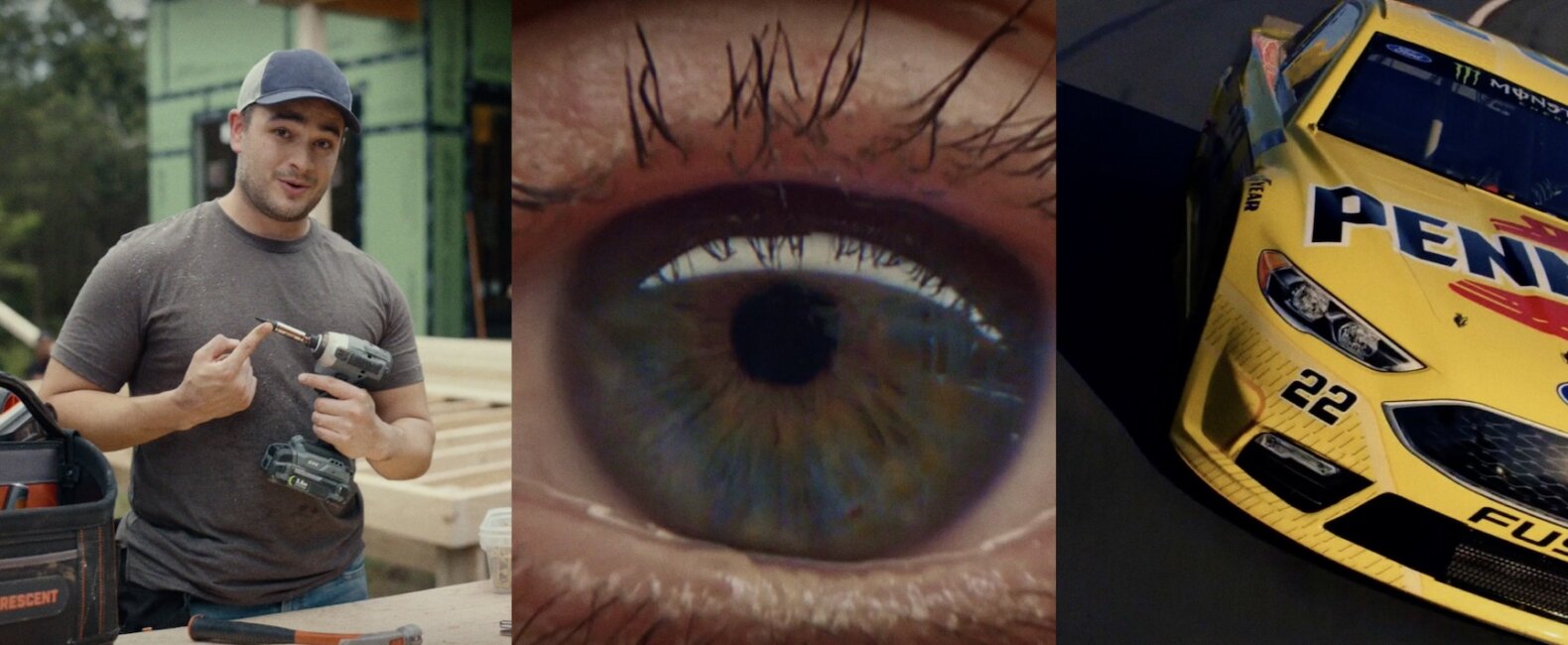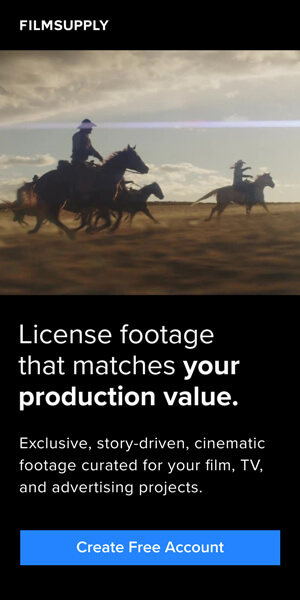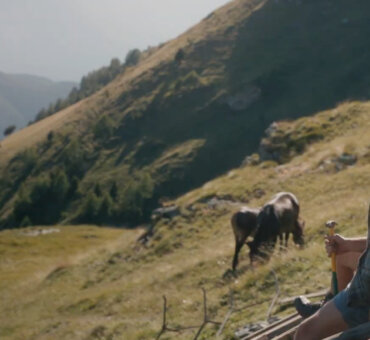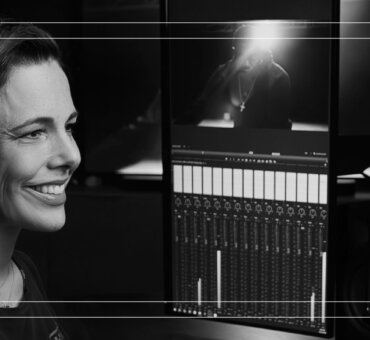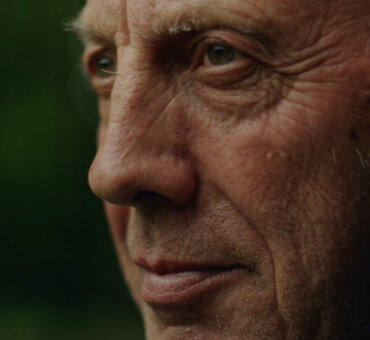In the fast-paced world of commercial editing, Eddie Kesler, senior editor at Company 3, has carved out a niche as a storyteller who thrives under pressure. From his early days experimenting with the very first version of Photoshop to cutting spots for some of the world’s biggest, most recognizable brands, Eddie’s career is a blend of technical skill, elbow grease, and creative vision.
In this interview, he talks about his most memorable projects, the trends reshaping the industry, and the overlooked skills that define great editors.
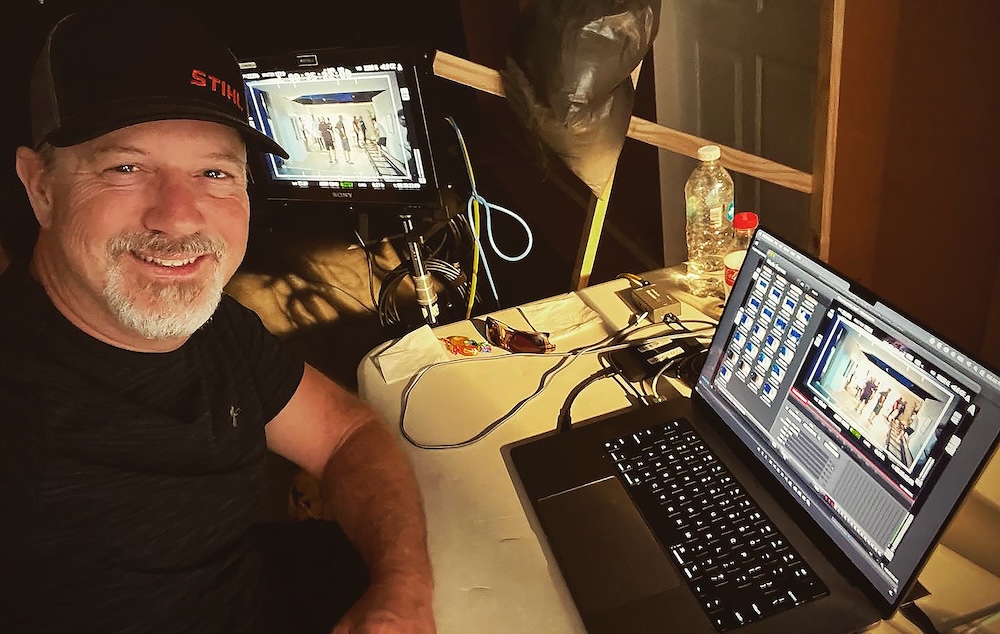
FILMSUPPLY: You’ve built an impressive career in commercial editing. How did you first get started?
Eddie Kesler: My path to becoming an editor was far from conventional. Growing up, I was always drawn to creative pursuits like drawing, painting, and playing music, which led me to study fine arts in college.
I eventually dropped out to tour with rock bands, where I took on designing promo flyers for our shows. This sparked my interest in design. And when a friend introduced me to Photoshop in the early ’90s, I was hooked.
I immersed myself in the software, which eventually led to a gig retouching texture-mapping photos for wireframes I was learning to build for a 3D model company in California.
RELATED READS: How Tucker Bass Turned a Craigslist Gig into a Thriving Career in Editing
Though I never sold a model to them, I really honed my Photoshop skills, which caught the attention of an ad agency in Atlanta, thanks to my then-roommate, who was working there, and current long-time EP at Smuggler, Allison Kunzman.
With no prior advertising experience, I joined their studio as a designer and photo retoucher, marking the start of my career in the industry.

Around the same time, Adobe released After Effects. I acquired a beta version and quickly learned it, creating animations that impressed the agency’s executive creative director. This led to me pitching and securing a Media 100 and After Effects for the agency. I soon learned video editing on the job with the help of my editor friend and mentor, Tim Vece, who was cutting in at an editing shop across town.
I discovered a natural talent for editing and storytelling and became one of the first in-house agency editors in the Southeast.
Over time, I built a strong commercial reel, first cutting everything from focus group tapes to rips and then to full spots. And after building up and running the in-house edit team for a few years, I moved to a post house in Atlanta. There, I worked with high-profile clients like Jerry Cronin, of W+K fame, cutting spots for ESPN, Bud Light, and Delta Airlines.
This work helped establish my reputation in the market and taught me invaluable lessons from talented, ego-free collaborators.
RELATED READS: Behind the Scenes with Sam Epstein: Memorable Projects and Career Lessons
After a few years, I opened my own boutique post shop, Jam Edit, and offered creative editing, VFX, and color grading. We quickly gained prominence in the southeast and got a loyal following among agencies and creatives.
Seven years later, Company 3/Method Studios approached us with a deal to integrate Jam Edit into their expanding Atlanta operations. This eventually became part of Beast Editorial. And then four years ago, Beast was rolled into Company 3, where I’ve been cutting for over 12 years.
Looking back, I’m grateful for the opportunities, relationships, and creative growth that have defined my journey in this industry.
RELATED READS: From Opera to Ads: Marco Perez’s Journey
As a Senior Editor at Company 3, how do you approach leading and mentoring editorial teams?
Eddie Kesler: At Company 3, we bring on established talent with strong client followings — as well as promising newcomers eager to grow in the field. We offer mentorship across all areas of post. We also help young artists discover their true passions — whether it’s transitioning from FX work to editing or finding a calling in color grading.
With a vast network of resources and a collaborative team spanning multiple locations, we adapt seamlessly to large, fast-paced projects. Our in-house producers play a key role in keeping everything running smoothly, ensuring we all work efficiently and effectively.

What trends are you seeing in commercial editing?
Eddie Kesler: It’s been all over the place these past few years. For much of my career, I’ve worked on a lot of comedy spots. But with the challenges brought on by COVID — as well as having a political and social landscape as tumultuous as has been since — comedy in advertising has not been quite as prevalent currently. Companies have had to be very careful, and rightly so, in conveying their messages. Plus, comedy is probably the trickiest and most difficult to get right as it is.
So as of late, the industry leans towards more contemplative, slower-paced vignettes, with a nod to cinematic and more diverse, inclusive messages.
As far as the logistical and technical trends of commercial editing, 2020 turned everything on its head. There’s definitely been a shift internally, both on the client side and the agency side. Most of them are now building and utilizing in-house production and post arms.
Having been on both sides of that street, I can see why this is beneficial with the current rapid-fire delivery of social media content. But we at Company 3 consider ourselves specialists, and clients bring us strong work, not only for broadcast, but for all facets of advertising media outlets.
RELATED READS: Avoiding Trends and Defining Freedom With T Brand Studio’s ECD Vida Cornelious
What are the key elements of a compelling story?
Eddie Kesler: There are so many ways to tell a story. But in most well-told stories, there needs to be an establishment of a plot, concept, or idea with something to build anticipation, tension, or a desire for resolution, with resolution often being the key ingredient.
Occasionally, you can craft a good story without complete resolution. The trick is telling it well enough so the audience can form their own resolution after the storytelling ends.
What are some of the most memorable projects you’ve worked on?
Eddie Kesler: Early in my career, Jerry Cronin brought me on for a large collaborative project that Michael Karbelnikoff shot for ESPN and Sears. It was the second in a series that they labeled “advertainment.” They’d concept, write, and shoot multiple extended episodes that told a complete story — just like watching a series on television.
This thing was big-budget. We shot it on 35mm film — very cinematic — and we had Seymour Cassel of the Wes Anderson movies in the lead role.
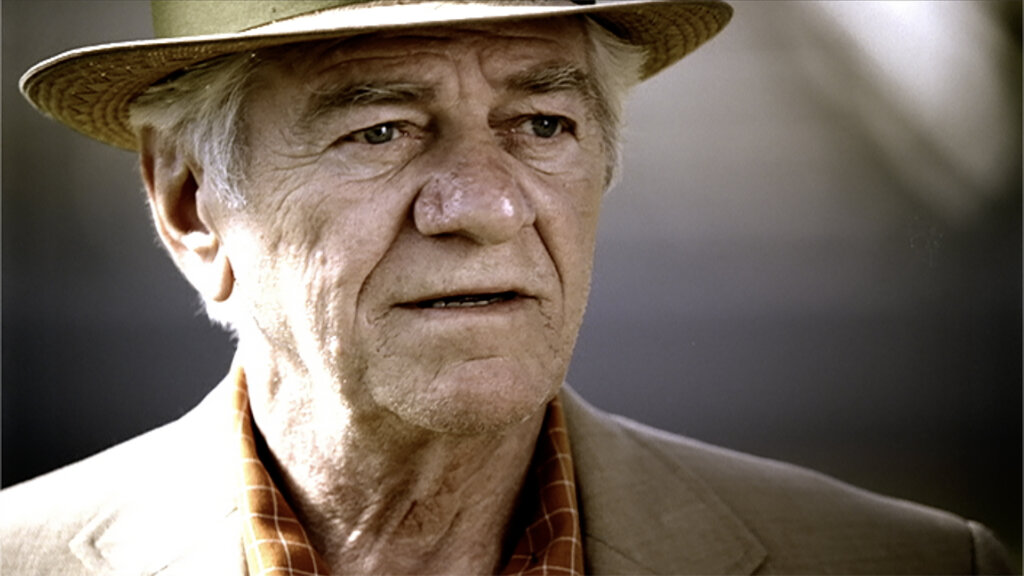
You had to watch all the episodes from beginning to end to get the full picture — just like any series. Instead of any VO, end cards, or the usual commercial elements, they used product placement within the story to promote the brand. Really, it was the first of its kind. (It’s what we all now mostly refer to as “content.”)
RELATED READS: The Insane, 100-Day Production Behind ESPN’s ‘Draft Academy’
Another memorable, yet wild campaign I worked on was for AT&T. We did a really nice spot with golfer Jordan Spieth that AT&T sponsored before his second Masters tournament, who was just starting to make waves in the PGA.

I was out of town, watching the tourney that Saturday when he started to run away with the lead. The producer at BBDO called, frantically telling me that AT&T wanted to have a congratulatory spot ready if he ended up winning. I cut my trip short and headed back to edit a spot using whatever footage was available. I used bits from the tournament, archival footage — anything I could find.
We found this great local news clip of him when he was 14, where he said his goal was to win the Masters. And over a two-day, two-night marathon edit, we constructed a really moving, emotional spot celebrating his win. Exhausting, but another great one to be a part of.

Another one of my favorite campaigns I worked on was for the US Navy through VMLY&R. They had concepted a new docu-series called Faces of the Fleet. Each webisode featured an inspiring story of a real sailor, each with a very diverse background, to help with their recruiting efforts. They followed each sailor and shot tons of footage.
They had a rough idea of what they wanted the pieces to say, but it was a lot of work finding the nuggets within. For some of it, we’d have to piece together rough dialogue and craft them into 3- or 4-minute stories. The spots were very challenging to edit, but they were really moving. (I still like looking back on it even today.) They won some national awards, to boot.

Recently, I was fortunate to work on a really unique project for Atlanta United FC through the agency, Chemistry. The team launched a new uniform kit that celebrated the history and diversity in soccer. It was a 5-minute piece that premiered at the National Center for Civil and Human Rights on six very large, synced, vertical screens.
The project told the story of several historic events that brought people and countries together through the sport. It included heavy FX, graphics, still images, and footage with inspiring music, dialogue, and sound effects. The piece won a Best of Show campaign and a national ADDY for editing. It was a really moving project I was fortunate to work on.
What’s your process for collaborating with directors and agencies to bring a vision to life?
Eddie Kesler: In the commercial production process in the US, strangely, editors aren’t generally brought into the pre-production/production phase. Often it’s a logistics and budget issue that the editor can’t always be on set. But sometimes it’s also because editors are busy editing other campaigns while the shoot is happening.
I find it very beneficial to have the editor on set and in pre-pro calls. When I’m brought to set, I can provide fixes for timing/flow issues that would have resulted in extra work in post. Knowing all the footage and takes before I even start cutting is a huge plus. That’s especially true with the trend of tighter deadlines.
When I’m asked to collaborate with clients and directors before the edit, I know the project will be smooth throughout.
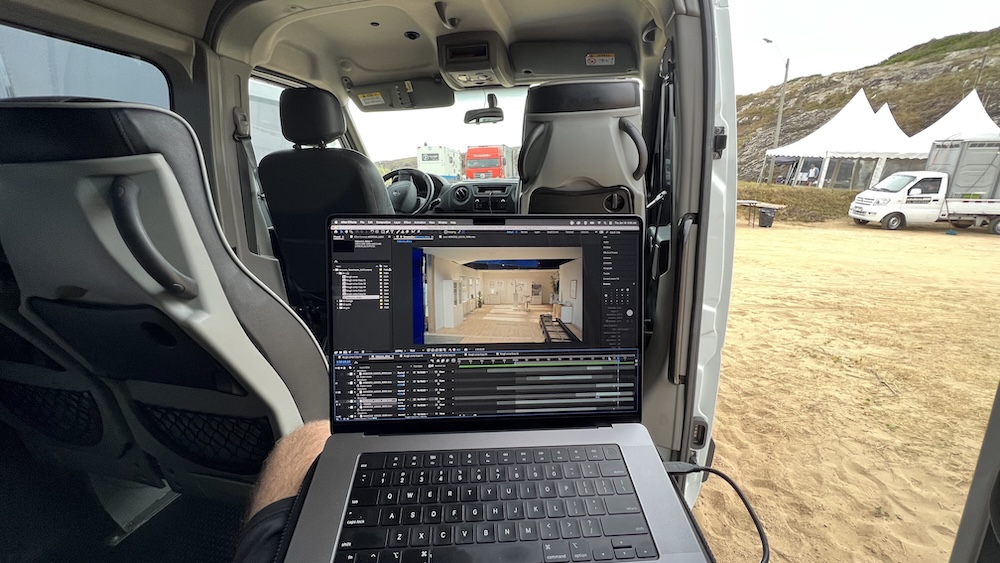
What’s something that has inspired you or caught your attention lately?
Eddie Kesler: Music inspires me more than anything. I love writing songs, and I play several instruments. I’m always inspired by excellent songwriters and players.
As far as film, I’ve been cutting a first feature with a young director/actor who goes by Jack Pop. He’s got a few million followers on YouTube and social media, and I’ve known him since he was 10.
He’s got a crazy eye for comedic timing and is super-talented both in front of and behind the camera. And he’s a hard worker. It’s great to see someone young like that honing their craft and hungry.

What’s one overlooked skill that‘s a mark of a great editor?
Eddie Kesler: I don’t know if it’s necessarily a single skill, but you definitely have to have great timing, rhythm, and flow. If I had to say only one thing, it would simply be experience. It’s often overlooked nowadays. The ability to cut different story styles and problem-solve for missed shots, incorrect angles, and shaky concepts is what separates good editors from great ones.
We all want to win awards for the big-budget, A-list jobs. But some of the biggest wins are saving the average spots that were a mess when we loaded it. As they say, “The best editing is the edit you don’t see.”
RELATED READS: Al Benoit: A Fresh Perspective on Industry Challenges and Finding Truth in Every Frame
What do you look for when hiring or working with editors?
Eddie Kesler: I look for someone who’s personable, has an eye for great work, and can maintain good rapport with clients. And I need someone who will do whatever it takes to make a project sing.
There are some talented editors who can work well behind closed doors. But to be an in-demand commercial editor, you have to have a good social demeanor. You have to be able to run a session of a roomful of clients, who often have conflicting opinions and drill you pretty hard in real time to make changes upon changes on the fly.
A director friend of mine once told me, “A good editor is someone you can feel comfortable sitting in a room with for 10+ hours a day, for days on end.” I’d have to say I agree.
RELATED READS: Chris Gipson on the Art of Commercial Editing
Why would you recommend Filmsupply as a resource for editors, agencies, and post houses?
Eddie Kesler: Filmsupply has an expansive collection of beautiful, cinematic footage. Their stuff looks much more professional and current than other stock footage companies. The website is well thought out and easy to navigate.

Filmsupply represents some high-end, talented filmmakers, and its library is unmatched. We used Filmsupply recently on a nice spot for the Atlanta Journal-Constitution with Dagger, where we mixed footage shot by the production company with some great shots from the library.
RELATED READS: Case Study: How Editor Matt Carter Used Filmsupply to Elevate a Nas Music Video
